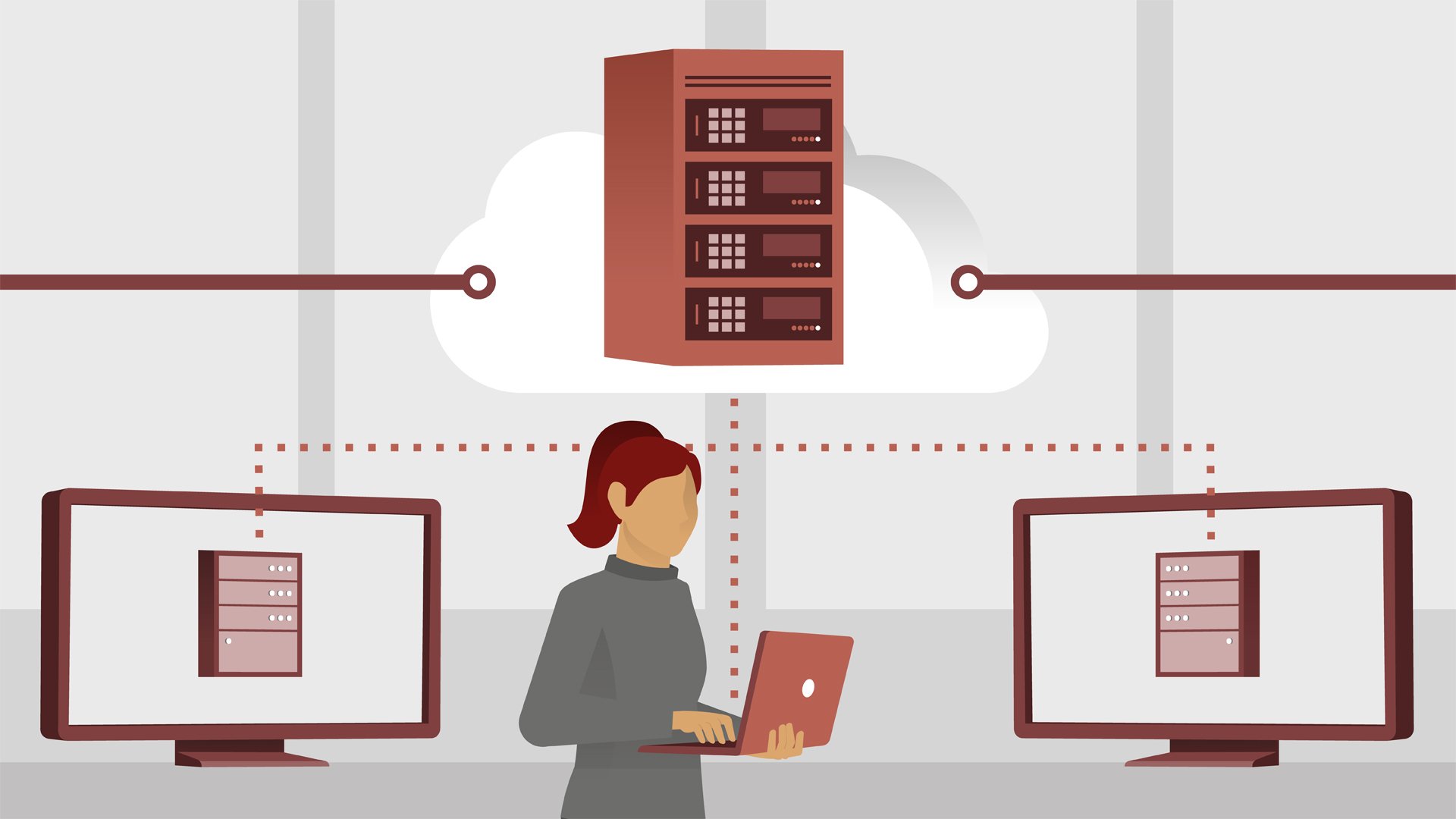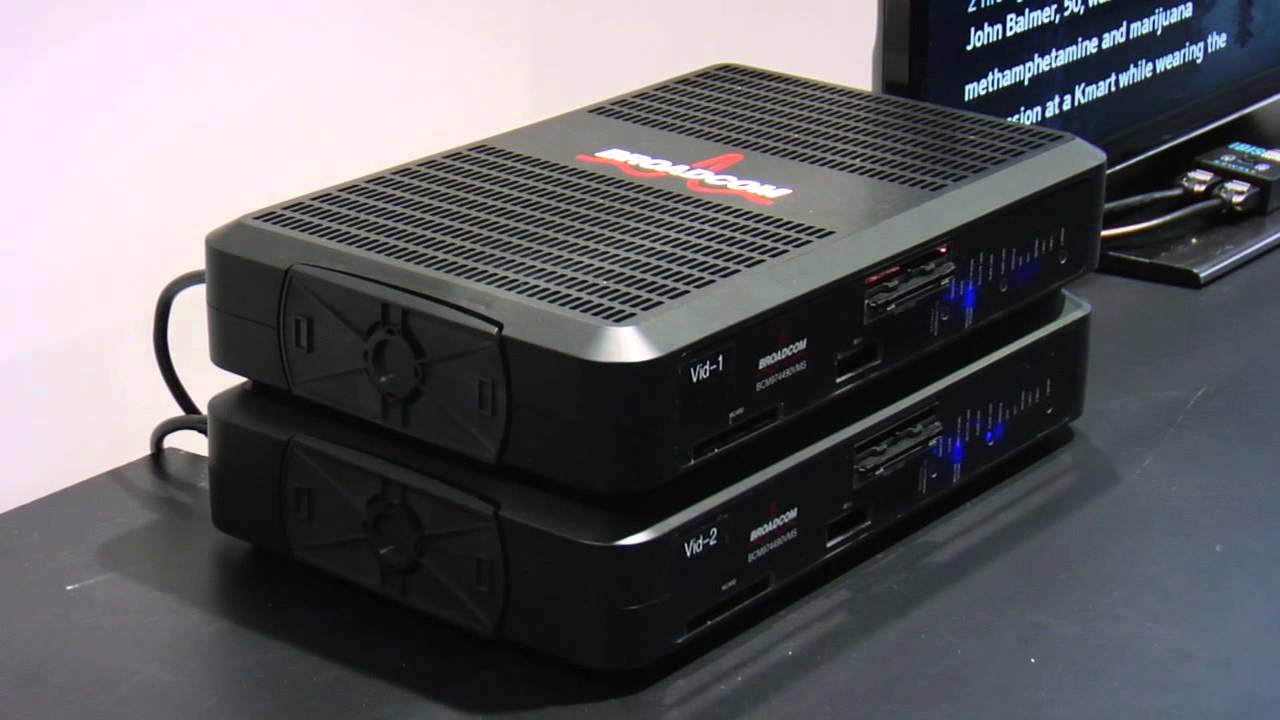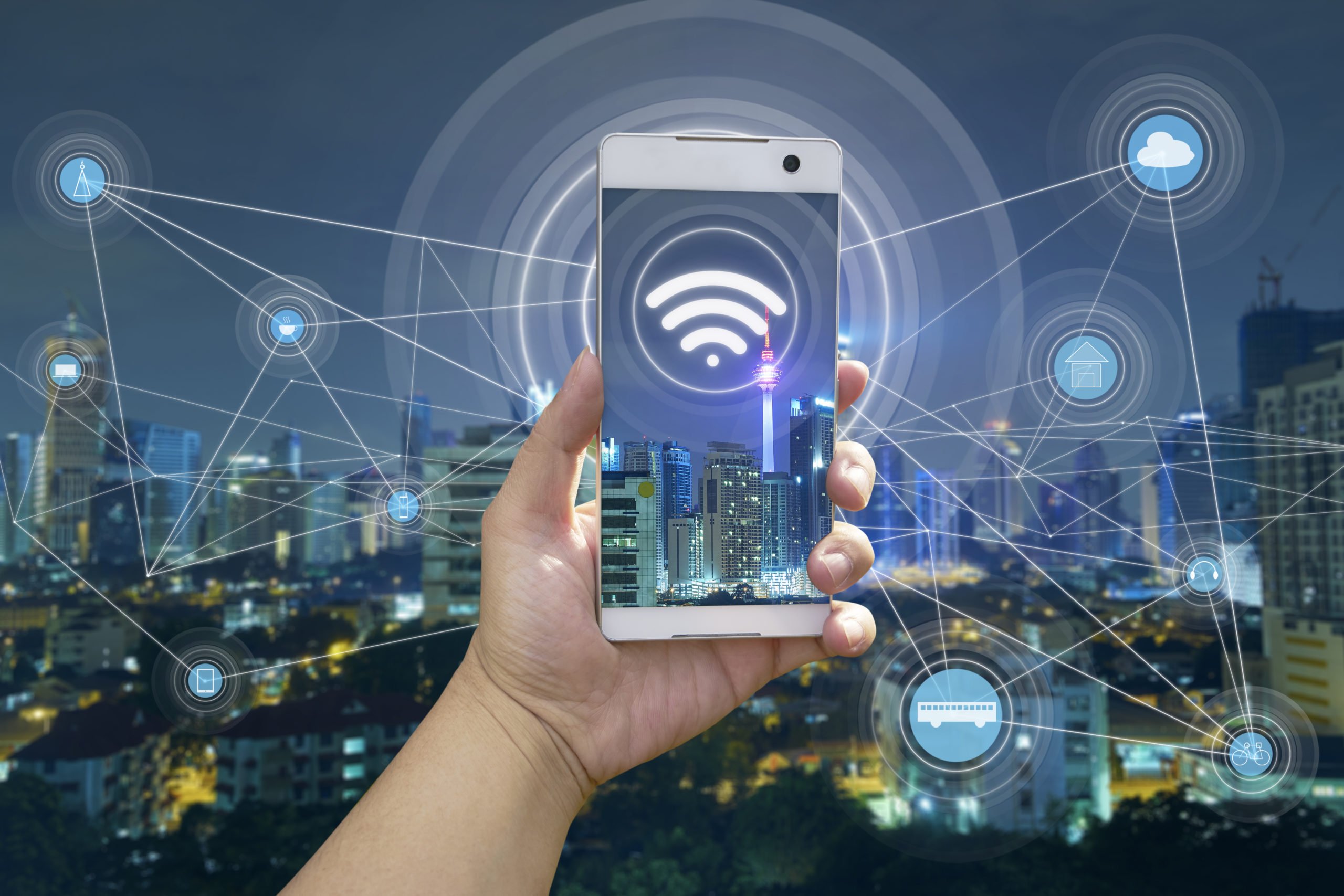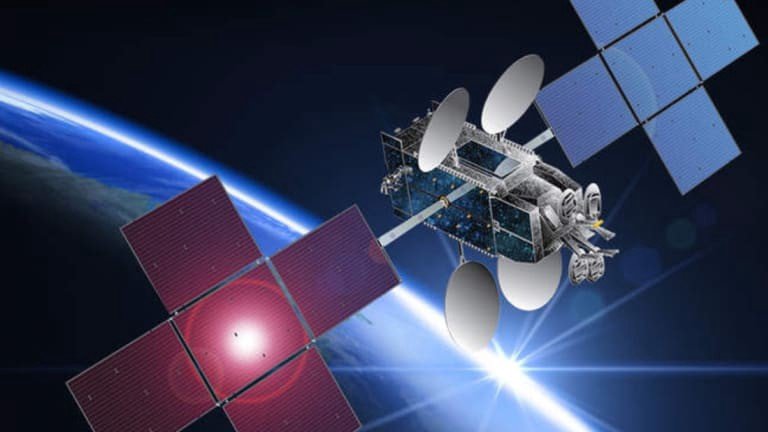FTC disclaimer: This post contains affiliate links and I will be compensated if you make a purchase after clicking on my link.
Broadband is a modern age internet service that provides a high-speed internet connection. It is always on so that you can enjoy and make communication and messaging more convenient and easy.
Broadband technology has added an opportunity to browse the internet while making a phone call.
Before broadband, internet service can be achieved through narrowband, which is also called a dial-up connection.
The traditional dial-up connection is very slow, and it needs to be activated manually. Moreover, it can perform only a single task at a time as you can either make a phone call or connect to the web.
What does Broadband mean?
Technically, broadband means data transmission through a broad or wide range of frequencies that simultaneously support two or more traffic types.
But, the definition of broadband may vary as per the organization. According to FCC (Federal Communications Commission), broadband internet is defined as a minimum of 25 Mbps download and 3 Mbps upload speeds.
The providers set the minimum data speed limitation to provide consistent and better internet services.
Similarly, Ofcom, the communication regulator in the UK, has defined broadband connection when it meets the minimum requirement of 10 Mbps download and 1 Mbps upload speed.
Advantages of broadband connection over a dial-up connection
The broadband connection provides broad or wide bandwidth, making it easier to multitask, with several applications running in the background.
It also provides you an opportunity to built a network using a wireless or wired modem.
The broadband connection will never engage your phone while in use, unlike a dial-up connection. Also, it gives additional facilities to use internet phones compare to a traditional phone line.
The great benefit of a broadband connection is that it is always on to enjoy your favorite online streaming movies or games that mostly rely on a fast internet connection.
Types of Broadband Connections
The high-speed broadband connection can be offered majorly in four different forms: DSL (Digital Subscriber Line), Cable, Fiber-optic, and satellite.
Digital Subscriber Line (DSL)
The Digital Subscriber Line transmit data through a traditional copper telephone line, which is already installed in home and businesses.
The speed of DSL based broadband connection varies from several hundred Kbps to millions of Mbps.
Moreover, the speed of the DSL-based broadband connection depends on the distance of the switching station.
If the switching station is far away from your home, you may experience slow speed, and if it is closer to your home, then the internet speed would be faster.
There are mainly two types of DSL transmission technologies:
Asymmetrical Digital Subscriber Line (ADSL)
The Asymmetrical Digital Subscriber Line (ADSL) is primarily used by the customer, who generally consume more data but send very little data.
It typically provides higher speed in the downstream direction than the upstream direction, which means you will have more download speed than upload speed.
Also, data transmission doesn’t disrupt the voice service when it is on the same line.
Symmetrical Digital Subscriber Line (SDSL)
The Symmetrical Digital Subscriber Line (SDSL) is a type of Digital Subscriber Line (DSL), where the downstream and upstream speed is equal.
It is mostly used by businesses or corporations, where there is a need for downstream and upstream speed.
Cable Modem
The cable modem is very similar to the DSL modem, but the only big difference is that instead of telephone lines, the internet services are transmitted through a coaxial cable.
Moreover, the internet services are provided by cable operators using the same coaxial cable to deliver pictures and sound to your TV set.
Also, the broadband speed will vary depending on some of the external factors.
If too many users are accessing cable internet connection simultaneously, then the speed may slow down.
The other factor includes the geographical areas and the number of users living in that area.
As the number of users increases and sharing the same connection bandwidth, it will decrease the cable broadband speed.
The rate of cable broadband depends on the company and the package you are subscribing to.
Fiber-Optic
The fiber-optic is the newest broadband service that offers the fastest internet connection.
However, fiber-optic internet connection is limited because it requires the laying down of the fiber-optic cable, which will take some time to spread all around.
Moreover, the cost of fiber-optic broadband connection remains competitive compared to DSL or Cable Modem Broadband connection.
But, the speed you will get with the fiber-optic broadband connection will be the fastest.
The fiber-optic technology is based on converting the electrical signal carrying data into light. The light is further passed through transparent glass fibers, which is considered the diameter of human hair.
With a fiber-optic broadband connection, you will get a speed that starting with 50 Mbps, and it will go to hundreds of Mbps.
Although the speed of fiber-optic internet connection may vary with the configuration by the service providers.
Moreover, with a fiber-optic broadband connection, you can enjoy VoIP and video-on-demand services along with an internet connection.
Wireless Broadband
Wireless broadband technologies using radio link to transmit data from long-range directional equipment.
It provides broadband services to the remotely located area or sparsely populated area, where the reach of DSL or Cable Modem broadband services would be costly.
Wireless broadband can be fixed or mobile, and it requires an external antenna to access the broadband service.
The fixed network will allow consumers to access wireless broadband internet services from a fixed point.
Moreover, the fixed network wireless broadband services require a direct line-of-sight between the wireless transmitter and receiver.
The fixed wireless broadband services are designed to provide internet services within a home or business. It can be publically accessed using the hotspot in restaurants, airports, hotels, coffee shops, city parks, and convention centers.
The speed you can get with a fixed wireless broadband connection is more than 1 Mbps.
On the other hand, mobile wireless broadband services can be accessed from mobile telephone service providers. It requires you to have a special PC card built-in antenna so that you can plug-in to your laptop.
It is appropriate for highly-mobile customers and can achieve several hundred Kbps to approximately 20 Mbps.
There are several mobile broadband technologies:
- 3G Mobile broadband
- 4G Mobile broadband
- 5G Mobile broadband
- 6G Mobile broadband
Satellite broadband
Satellite broadband is another broadband service that offers the slowest broadband services in remote or sparsely populated areas.
It is based on the link received from the satellite orbiting the earth, just like it provides telephone and television services.
The satellite and space-based broadband speed depend on several factors such as subscribers package, weather condition, and the consumer’s line of sight from the orbiting satellite.
Moreover, the user can expect the download speed starting from 500 Kbps and an upload speed of more than 80 Kbps.
Sometimes, the satellite broadband speed can be slower than the DSL and cable modem broadband connection. But, it can be 10 times faster than the dial-up internet connection.
Broadband over Powerline (BPL)
Broadband over Power Line (BPL) is based on technology that transmits internet data over the public electric power distribution wiring.
BPL is an emerging technology that uses higher frequencies and wider frequency ranges to provide high-rate communication over longer distances.
Moreover, Broadband over Power Line (BPL) is available in a very limited area, and it has significant potential to alleviate the new broadband facilities for every customer.
However, BPL may face challenges from the interference of Over-The-Air (OTA) communication services that fall in the radio spectrum range.
The radio spectrum is a part of the electromagnetic spectrum, whose frequencies vary from 50 Hz to 300 Hz and the BPL frequencies also lie within this range.
Also, the estimated installation charges for BPL are quite high, but the monthly charges are competitive to DSL and Cable modem.
Factors that affect the broadband connection
Many factors affect the broadband connection, such as speed, latency, and much more.
A good approach to choosing a good broadband service is searching for the available broadband service in your area and knowing how it works for other users.
Bandwidth
Bandwidth is one of the factors that determine the internet connection speed. However, bandwidth is defined as the measure of transmission of data over a period of time.
If the data flow is large, then that internet connection network is better. Although the data rates for broadband services is higher than 300 Kbps, compare to the traditional dial-up connection that provides an average of 53 Kbps.
Latency
The latency is another factor that affects broadband services. Latency generally refers to the delay incurred during network data processing.
If the latency is very low, you may experience small delay times, and if the latency is higher, you will experience a long delay time.
The high latency is the bottleneck for data transmission that effectively reduce the cable’s internet connection bandwidth.
Moreover, it will reduce the bandwidth even further when the number of users accessing the data increases simultaneously.
Distance
The broadband connection speed also varies if the subscriber is located far from the switching station.
The more the distance of the switching station away from the subscriber, the slower the internet connection.
How to choose the best broadband internet service?
Choosing the best broadband internet service will depend on what is your actual needs. Before choosing a broadband service, it is important to consider the below points:
Broadband service options available in your area or building or apartment: Many apartments or buildings are already providing dedicated lines for broadband service. If there would be the option for fiber-optic, then it would be best.
Broadband service options for travelers: For travelers, mobile broadband, or portable wi-fi hotspot would be the best options.
Choosing faster broadband service: If you are looking for faster broadband service, then fiber-optic or 4G or 5G broadband service would be much better than DSL or Cable modem.
The data speed is really needed if you expect to stream 4K movies via Netflix or Hulu or looking to avail of online gaming services such as Project xCloud or Google Stadia.
Need too much data: If you really need too much data, then look for a broadband plan that provides a bigger data plan, but if you are short on budget, then compromising on the speed with a larger data plan would be a good option.
How to measure broadband connection?
The broadband connection can be measured using megabits per second (Mbps); if the megabits are higher, the broadband speed is faster.
You can enjoy your favorite movies, TV shows, games, video calls, and torrenting online with faster broadband.
Although the FCC recommends 12-25 Mbps speed for home internet connection with multiple users.
Let’s look into a couple of activities that require minimum broadband speed.
- General browsing and email: 1 Mbps download speed
- SD Video streaming: 3 Mbps download speed
- HD Video streaming: 5 Mbps download speed
- Ultra HD Video streaming: 30 Mbps download speed
- Voice over IP (VoIP): 0.5 Mbps download and upload speed
- Online Gaming (Real-time): 3 Mbps download and upload speed
- Online Gaming (Real-time with multiplayer): 4 Mbps download and upload speed
- Skype Video calling: 1 Mbps download and upload speed
- HD Video calling: 1.5 Mbps download and upload speed
- HD teleconferencing Video calling: 6 Mbps download and upload speed
- Streaming online radio: 0.5 Mbps
- Torrenting and file downloading: 10 Mbps
- Social Media: 1 Mbps













